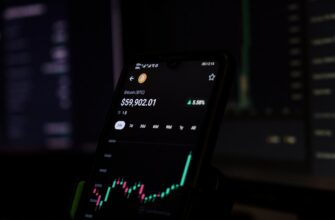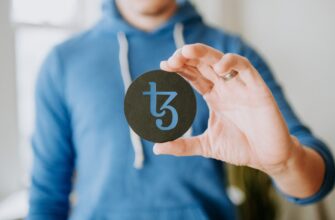- Introduction: The Verdict That Shook Crypto
- Who is Judge Analisa Torres?
- The SEC vs. Ripple Case: A Battle Over “Security” Status
- Breaking Down Judge Torres’ Historic Ruling
- Immediate Market and Regulatory Impact
- Ongoing Developments and Future Implications
- Frequently Asked Questions About Judge Torres and XRP
- Conclusion: A Defining Moment for Crypto Law
Introduction: The Verdict That Shook Crypto
When U.S. District Judge Analisa Torres delivered her ruling in SEC v. Ripple Labs on July 13, 2023, she didn’t just determine the fate of XRP—she reshaped cryptocurrency regulation. This landmark decision created immediate ripples across global markets, triggering a 75% surge in XRP’s value within hours and forcing exchanges like Coinbase to relist the token. At the heart of this seismic shift was Judge Torres’ nuanced interpretation of securities law, drawing a critical line between institutional and retail crypto transactions. This article unpacks her pivotal role, the ruling’s implications, and why “XRP Judge Torres” became synonymous with regulatory clarity in blockchain’s Wild West.
Who is Judge Analisa Torres?
Appointed to the Southern District of New York in 2013 by President Obama, Judge Analisa Torres brought decades of legal expertise to the Ripple case. Before her judgeship, she served as a New York State Supreme Court justice and worked in private practice focusing on commercial litigation. Notable cases she presided over include high-profile financial fraud trials and complex corporate disputes, establishing her reputation for meticulous analysis. Her background in dissecting intricate financial transactions proved crucial when evaluating XRP’s $1.3 billion sales—a case that would define her legacy in emerging tech law.
The SEC vs. Ripple Case: A Battle Over “Security” Status
The SEC sued Ripple Labs in December 2020, alleging the company illegally sold XRP as an unregistered security since 2013. Central to the dispute was the Howey Test—a Supreme Court framework determining if an asset qualifies as a security. The SEC argued XRP met all criteria: investors funded Ripple expecting profits from its efforts. Ripple countered that XRP functioned as a currency, not an investment contract. After 2.5 years of discovery, motions, and heated debates, Judge Torres’ summary judgment delivered a split decision that stunned both sides.
Breaking Down Judge Torres’ Historic Ruling
Judge Torres’ 34-page opinion distinguished between XRP sales channels with surgical precision:
- Institutional Sales: Deemed securities because buyers “expected profits” from Ripple’s managerial efforts.
- Programmatic Sales (Exchanges): Not securities because retail traders had no direct contractual relationship with Ripple.
- Other Distributions (e.g., employee bonuses): Exempt from securities classification as they weren’t investment transactions.
This bifurcation acknowledged crypto’s unique mechanics—exchange trades involve blind bid/ask orders, unlike traditional securities offerings. Crucially, she rejected the SEC’s push for blanket token classification, emphasizing context over abstraction.
Immediate Market and Regulatory Impact
The ruling ignited instant market fireworks and regulatory soul-searching:
- XRP Resurgence: Delisted from 200+ platforms post-SEC suit, XRP returned to major exchanges like Kraken within days, with trading volume spiking 1,000%.
- Legal Precedent: Judges in Coinbase and Binance cases referenced Torres’ logic, weakening SEC claims against other tokens.
- SEC Strategy Shift: Enforcement chief Gurbir Grewal admitted the need for “tailored approaches” post-ruling, slowing actions against exchanges.
Industry leaders hailed it as a victory for innovation. Ripple CEO Brad Garlinghouse called it “watershed,” while Coinbase cited it in their own SEC defense.
Ongoing Developments and Future Implications
Despite the landmark decision, the battle continues:
- Remedies Phase: Judge Torres will determine penalties for Ripple’s $728M in unlawful institutional sales—possibly fines or injunctions.
- SEC Appeal: Filed in August 2023, challenging the programmatic sales ruling. Appellate courts could overturn or refine Torres’ logic.
- Legislative Ripples: The ruling pressured Congress to accelerate crypto bill drafts like the FIT for Crypto Act, seeking clearer rules.
Legal experts note Torres’ framework may endure regardless of appeals—her transactional analysis aligns with global regulators like the UK’s FCA, which excludes exchange-traded crypto from securities rules.
Frequently Asked Questions About Judge Torres and XRP
Q: Why is Judge Torres called the “XRP Judge”?
A: Her ruling provided the first major judicial clarity on crypto securities, saving XRP from potential extinction and influencing global policy.
Q: Could her decision be reversed?
A: The SEC’s appeal might modify aspects, but overturning the entire ruling is unlikely. Higher courts often defer to trial judges’ factual findings.
Q: How did this affect other cryptocurrencies?
A> Tokens like SOL and ADA surged on expectations the SEC couldn’t broadly label exchange-traded coins as securities. Crypto projects now structure sales to mirror Torres’ “programmatic” criteria.
Q: What penalties might Ripple face?
A> Fines could reach hundreds of millions, but Ripple claims institutional buyers suffered no losses—potentially reducing penalties.
Q: Does this mean XRP is fully compliant now?
A> Only for exchange trading. Ripple must still register institutional sales as securities or face restrictions.
Conclusion: A Defining Moment for Crypto Law
Judge Analisa Torres’ XRP ruling remains a masterclass in balancing innovation with investor protection. By rejecting extreme positions from both the SEC and crypto advocates, she crafted a pragmatic framework that acknowledges blockchain’s uniqueness while upholding securities law’s core principles. As appeals unfold and legislation evolves, her nuanced approach will continue guiding the $2T crypto industry toward maturity—proving that in the courtroom of disruptive tech, context reigns supreme.








